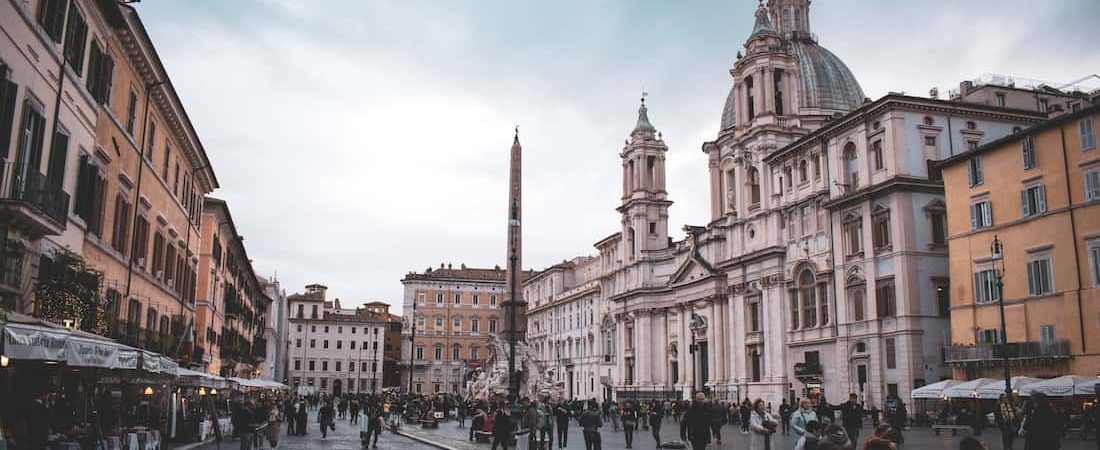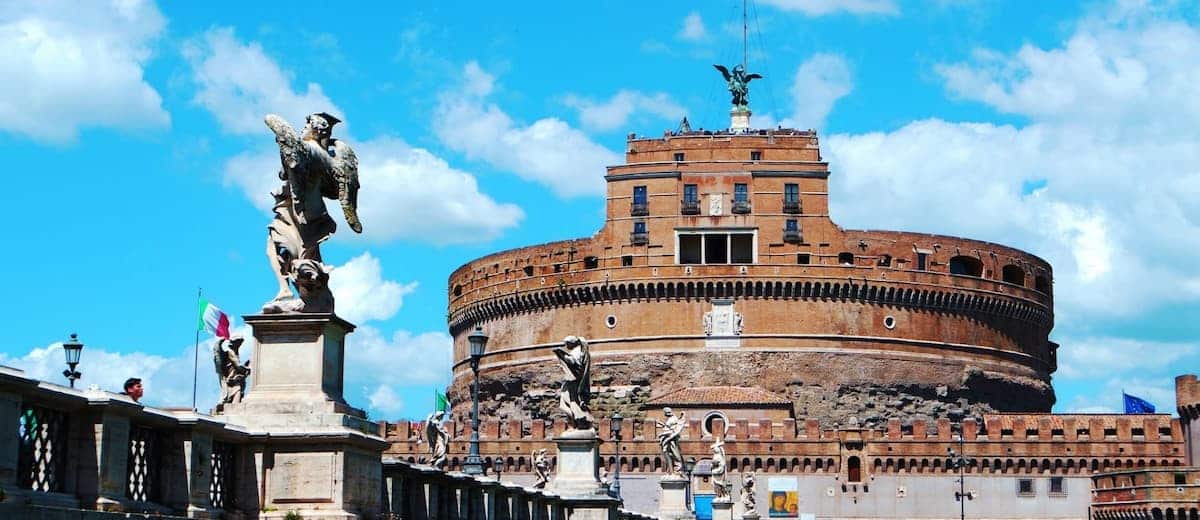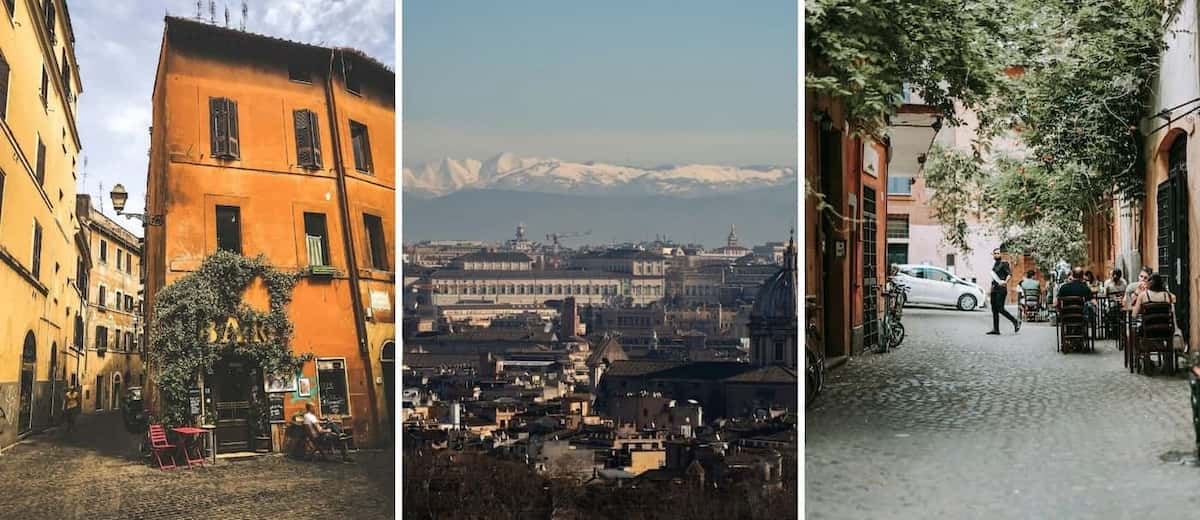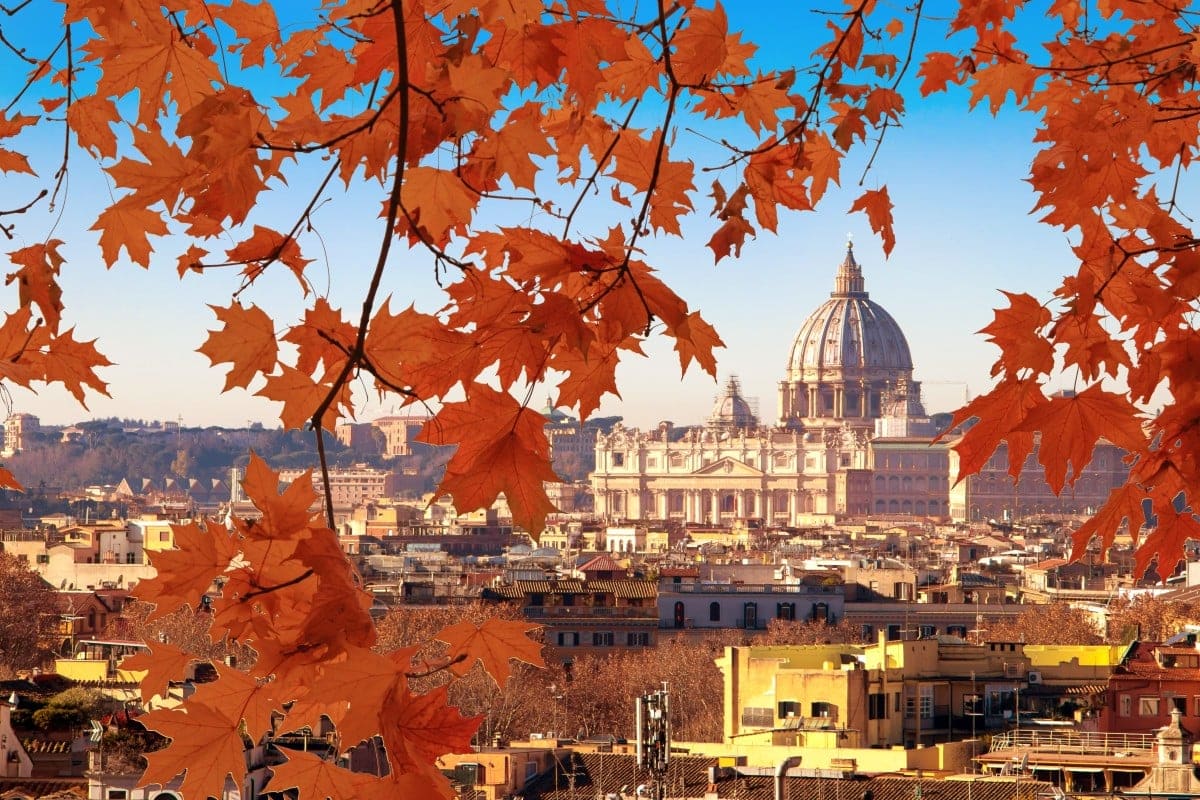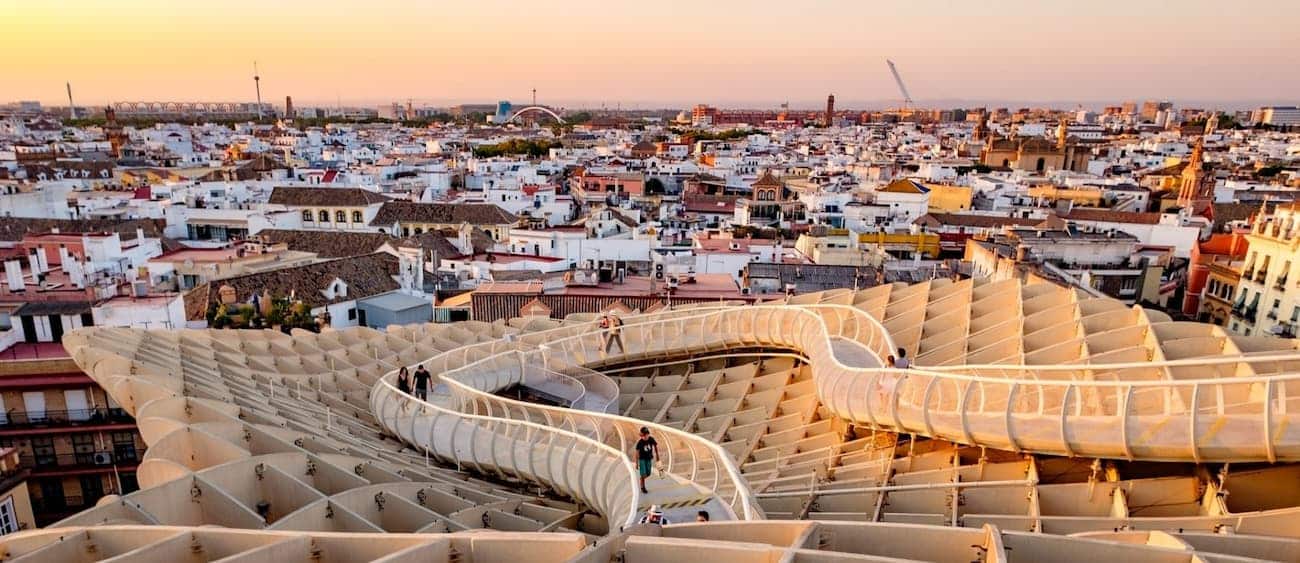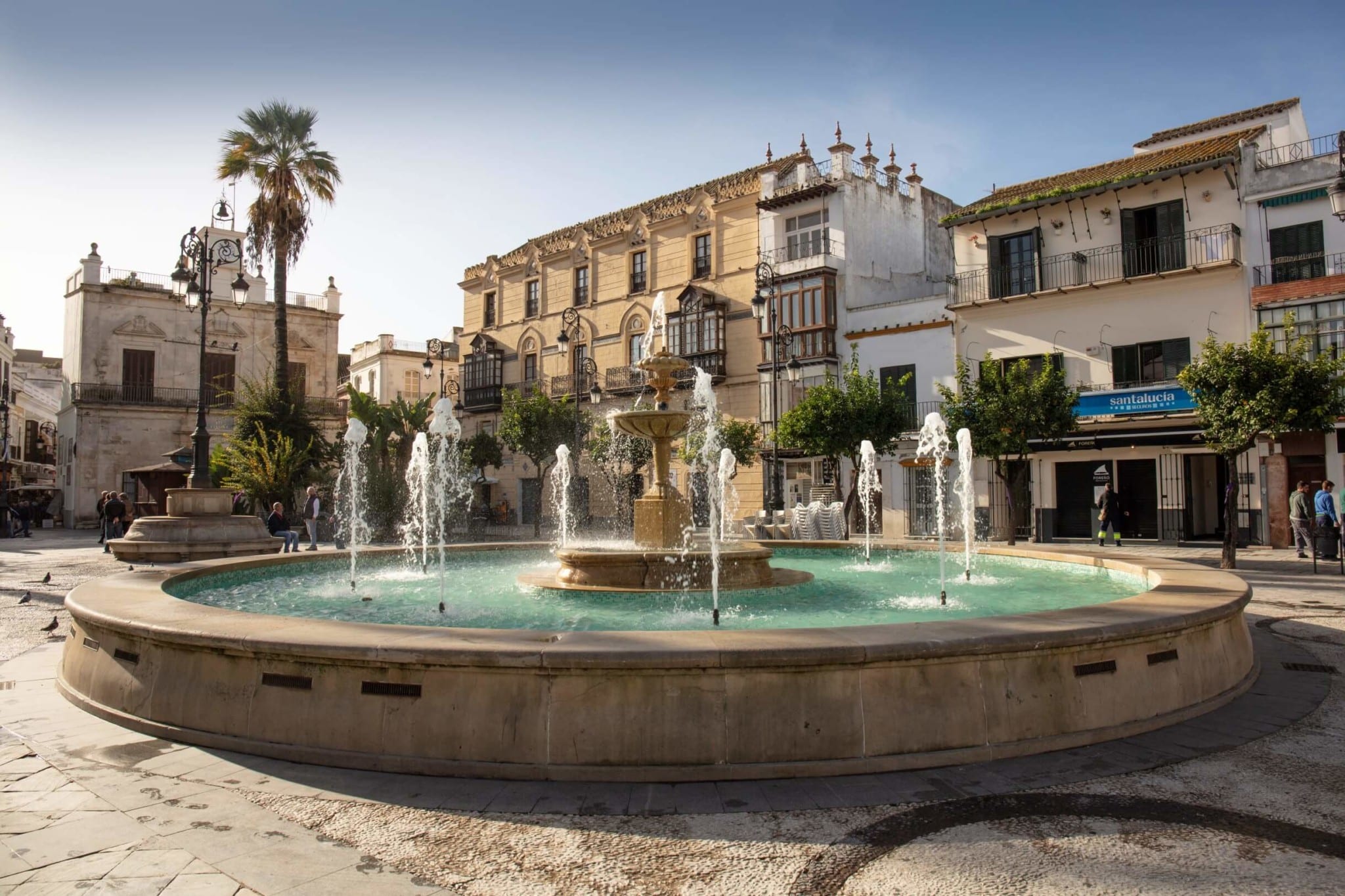Rome, known as the “Eternal City”, is a place where history can be found in every corner and its catacombs, of course, are no exception. The catacombs of Rome or Roman catacombs are underground galleries that were used for a long time, that is, centuries, as cemeteries where the pagan, Jewish and early Christian citizens of this city were buried.
The word catacomb means “next to the quarry”, and this is because the first excavations that were carried out to fulfill the role of a cemetery were located next to a quarry, on the outskirts of the capital of Italy. The city has more than 60 catacombs located in these tunnels that join together to form a great labyrinth, but only a small part of them can be visited today.
Walking the streets of the city of the Italian capital can feel, at times, as if it were a trip back in time. As you walk through its streets and you visit the monuments and buildings that date back centuries, it is inevitable not to go back to what happened there so many years ago and understand its importance and meaning even more. This is what happens with the catacombs of Rome, where burials of citizens began during the second century and ended around the fifth century.
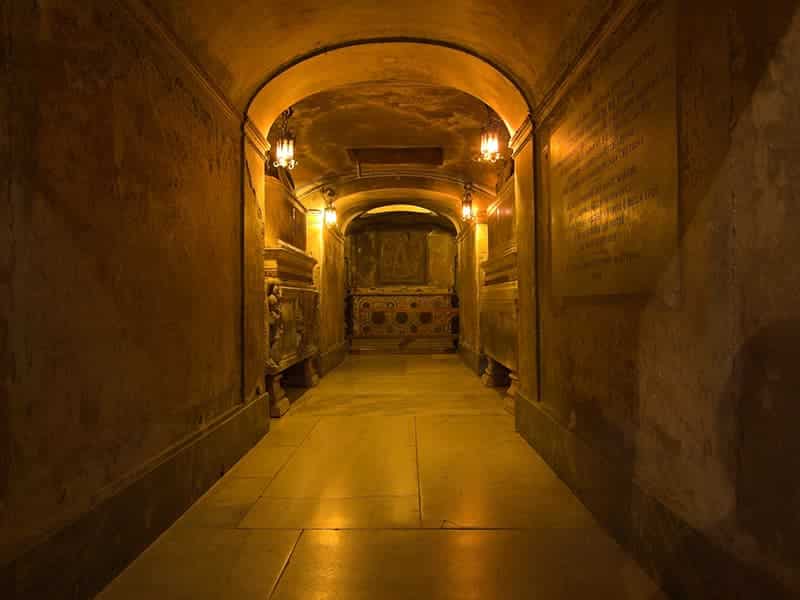
Next we will tell you everything you need to know about the catacombs of Rome: their history, which of them can be visited and everything you need to know when you decide to visit this incredible historical place of the Eternal City.
History of the catacombs of Rome
There is a lot of mysticism that surrounds the catacombs of Rome, stories that were told over time that took on the meaning of urban legends. In some of them it is argued that the people who walked through their tunnels got lost and disappeared, however what the story tells is different.
The catacombs of Rome were underground cemeteries, and arose from the lack of space to bury the bodies of people who died, which also had a high cost. The pagan custom was to incinerate the bodies of the people after their death, but it was something with which the Christian community did not agree. That was why they turned to these underground tunnels.
These sites that are underground have a huge number of galleries that create labyrinths that extend for several kilometers. In each of these galleries, or tunnels, several rows of rectangular niches were dug where eventually people’s ports were placed after wrapping them in a sheet. Later, they were closed with a marble tombstone or also with baked clay and the name of the person was engraved so that they remain identified.
The reason why the catacombs of Rome were located on the outskirts of the capital city is because the law of the time prohibited the burial of the deceased in that locality. So, By not agreeing with the pagan custom of cremating bodies, these sites located outside the mute of the city and underground became the new “graveyard”.
The use of the catacombs of Rome as a cemetery extended from the second to the fifth century, almost 200 years after the persecution of Christians stopped and they could begin to build their own churches leaving put aside fear. After a while, these underground galleries were abandoned and even forgotten for a long period of time.
The discovery of the catacombs of Rome
In total, in the city of Rome there are around sixty catacombs that extend over a space between 150 and 170 kilometers in length. In all that space, around 750,000 graves were located.
It was only in the 19th century that a systematic exploration of these underground spaces that were in the capital of Italy began to take place, by the archaeologist Juan Bautista de Rossi or Giovanni Battista de Rossi. At that time he discovered those of San Calixto, after having helped Father Marchi to discover those of Santa Inés. In any case, it should be noted that previously, around 1500, some research and exploration work had been carried out to find these cemeteries.

It should be noted that having been abandoned for so long, there is no clear record of the exact number from the catacombs of Rome. Although more than 60 are currently known, it is also believed that there are many more that have not yet been discovered. On the other hand, the period that they remained out of the public eye, and of any eye in general, has a good side.
The catacombs of Rome today constitute a direct, first-hand and intact testimony of antiquity. It is for this very reason that they have an innumerable value for those who dedicate themselves to their study, both for the inscriptions and the cultures and their frescoes. Perhaps if history had developed in another way, its state today would be different.
Visit the catacombs of Rome
Although the catacombs of Rome are more than 60, there are only five that today are open to the public and can be visited with the company of a guide. These underground galleries where Christians used to bury their deceased and that today can be traversed are divided into two groups. On the one hand there are those of the Via Appia, which include those of San Calixto, San Sebastián and Domitila, and on the other those that are on the other side of the city, to the north, which are those of Santa Inés and Santa Priscila.
Here is a description of each of these catacombs in Rome and we will tell you what you have to take into account at the time of your visit.
Catacombs of San Callisto
These catacombs of Rome became the official cemetery of the Roman Church during the 3rd century. A site where around half a million Christians were buried, including sixteen Popes. It consists of tunnels that extend through a network of 20 kilometers b the name of this site derives from the deacon San Calisto or Calixto, who was appointed by Pope Zeferino to carry out the administration of the place at the beginning of the third century.
Hours: These catacombs of Rome are open every day of the week except Wednesdays, from 9 a.m. to 12 noon and from 2 p.m. to 5 p.m. It should be noted that the visit can only be carried out in the company of the guides, and the tours depart every 30 minutes, each lasting 40 minutes.
Address: Via Appia Antica, 110.
Catacombs of San Sebastián
In the case of these catacombs in Rome, they were originally dedicated to Saints Peter and Paolo, but that changed in the 4th century when it was given its current name. This one comes from a soldier who was martyred for not renouncing his Christian faith.
This cemetery was known as “ad catacombs” mainly because of its location, since the quarries were there. Later, that name was used to designate all the Christian cemeteries that were in these underground spaces. Its galleries stretch for 12 kilometers.
Hours: The catacombs of San Sebastián can be visited from Monday to Sunday, from 9:30 a.m. to 5:00 p.m. ras. It should be noted that this space is not open to the public on December 25 or January 1.
Address: Via Appia Antica, 136.
Catacombs of Domitilla
Domitilla’s are from the largest catacombs in Rome, and their name comes from the fact that they were found on the grounds of Flavia Domitilla. These have a length of 17 kilometers where these underground galleries extend, some of them are not even accessible today.
This catacomb in particular was discovered by one of the first modern explorers of these cemeteries, Antonio Bosio, who in 1597 toured these spaces at the risk of getting lost in the labyrinth formed by the tunnels. At the time Bosio believed that he was in that of San Calixto, but in the 19th century it was learned that he was actually in that of Domitila.
Hours: these catacombs of Rome are open from Thursday to Tuesday, from 9 a.m. to 12 noon and in the afternoon from 2 p.m. to 5 p.m., while which are closed on Tuesdays. As in the other catacombs, it can only be explored with a guided tour.
Address: Via delle Sette Chiese, 280.
Catacombs of Santa Inés
The name of these catacombs in Rome comes from Santa Inés, a girl who was martyred at the age of 12 and who was buried in this space. In fact, her grave attracted so much attention that it was decorated with marble slabs and one of the popes dedicated an inscription to it. These catacombs have four regions, divided into three floors, dating from different times, which were discovered by chance in the 19th century.
Hours: The catacombs of Rome of Santa Agnes can be visited from Monday to Saturday, from 9 am to 12 noon and in the afternoon from 4 to 6 pm, while on Sundays and holidays they are closed to the public. Address: Via Nomentana, 349.
Catacombs of Santa Priscilla
These catacombs of Rome are part of the oldest cemeteries of this type, and it is one of the few that still preserve frescoes that are very important for the history of art. Priscilla is believed to have been the noblewoman who founded the underground cemetery or who donated the land for it to be made.
The decorations of the catacombs of Santa Priscilla include paintings dating from the second half of the third century, with depictions of marriage, motherhood and death, as well as also a fresco of the Virgin and child with a prophet.
Hours: these catacombs of Rome can be visited from Tuesday to Sunday, from 9 a.m. to 12 noon and in the afternoon, from 2 p.m. to 5 p.m. while Mondays are closed to the public.
Address: Via Salaria, 430.
The catacombs of Rome are spaces in which the history of the city takes on a different tonality, it can even be felt much more present than in others, either because of what it represents or because of its state of conservation as if they had remained in pause for a long time. Whatever the reason, they are undoubtedly places worth visiting on your way through Rome.
